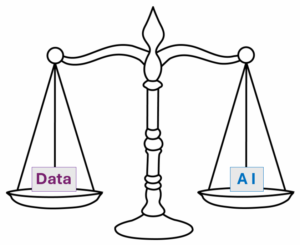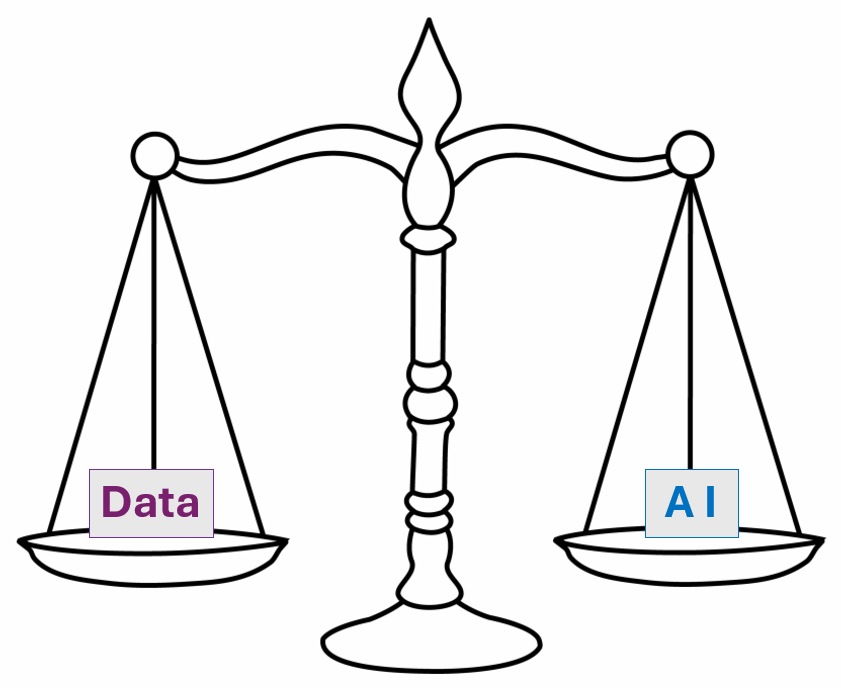In today’s data-driven business landscape, the integration of artificial intelligence (AI) and data analytics has become increasingly prevalent, empowering organizations to gain valuable insights, optimize operations, and make informed decisions. However, as the reliance on AI and data analytics grows, so does the importance of ensuring proper governance to maintain the trustworthiness, fairness, and ethical integrity of predictive results and decision-making processes. In this comprehensive guide, we’ll explore detailed suggestions and examples for implementing effective governance frameworks in AI and data analytics to uphold trust and integrity.

1. Establish Clear Governance Structures:
- To ensure accountability and transparency in AI and data analytics initiatives, organizations must establish clear governance structures that outline roles, responsibilities, and decision-making processes. This includes appointing dedicated governance teams or committees responsible for overseeing the development, deployment, and maintenance of AI models and data analytics processes.
- Example: A large financial institution establishes a Data Governance Council comprised of cross-functional stakeholders from various departments, including IT, legal, compliance, and risk management. The council is tasked with setting policies and standards for data management, privacy protection, and ethical use of AI and analytics within the organization.
2. Define Data and AI Ethics Principles:
- Organizations should articulate and codify clear principles and guidelines governing the ethical use of data and AI. These principles should align with the organization’s values, legal obligations, and societal expectations, emphasizing fairness, transparency, accountability, and privacy protection.
- Example: A global technology company publishes a Data Ethics Charter outlining its commitment to responsible data use and AI development. The charter includes principles such as fairness, transparency, accountability, and privacy protection, along with specific guidelines for handling sensitive data, preventing bias in AI models, and ensuring user consent and control over personal information.
3. Ensure Data Quality and Integrity:
- Data quality is paramount to the effectiveness and reliability of AI and data analytics solutions. Organizations must establish robust data governance practices to ensure the accuracy, completeness, and reliability of data sources, as well as data lineage and provenance to trace data origins and transformations.
- Example: A healthcare organization implements data quality checks and validation processes to ensure the integrity of patient health records used in AI-driven predictive analytics for disease diagnosis and treatment planning. Data governance policies mandate regular audits, data cleansing, and validation procedures to maintain high standards of data quality and integrity.
4. Mitigate Bias and Discrimination:**
- Bias in AI and data analytics algorithms can lead to unfair or discriminatory outcomes, perpetuating existing societal inequalities. Organizations must proactively address bias by implementing techniques such as algorithmic fairness assessments, bias detection tools, and diverse training data sets.
- Example: A retail company uses machine learning algorithms to recommend products to customers based on their purchase history and browsing behavior. To mitigate bias, the company conducts regular fairness audits to assess the impact of algorithmic recommendations on different demographic groups and adjusts the algorithms to ensure equitable outcomes for all customers.
5. Ensure Regulatory Compliance:
- Compliance with relevant laws and regulations governing data privacy, security, and ethical AI use is essential for maintaining trust and avoiding legal risks. Organizations must stay abreast of evolving regulatory requirements and implement measures to ensure compliance throughout the AI and data analytics lifecycle.
- Example: A financial services firm operates in a highly regulated environment governed by laws such as the General Data Protection Regulation (GDPR) and the Dodd-Frank Act. The firm implements robust data governance processes, encryption protocols, and access controls to protect customer data and ensure compliance with regulatory requirements.
6. Promote Transparency and Explainability:
- Transparency in AI and data analytics processes is crucial for building trust and understanding among stakeholders. Organizations should strive to make their AI models and algorithms transparent and explainable, providing clear documentation and explanations of how predictions or decisions are generated.
- Example: An e-commerce platform provides users with explanations for product recommendations generated by its AI-driven recommendation engine. The platform displays user-friendly explanations such as “Recommended based on your recent purchases” or “Popular items among users with similar preferences,” helping users understand the rationale behind the recommendations and increasing trust in the system.
7. Monitor and Audit AI Systems:
- Ongoing monitoring and auditing of AI systems are essential for detecting issues such as algorithm drift, data drift, or unintended consequences. Organizations should implement robust monitoring tools and audit processes to track model performance, identify anomalies, and address potential risks in a timely manner.
- Example: A transportation company deploys AI-powered predictive maintenance models to forecast equipment failures and schedule preventive maintenance for its fleet of vehicles. The company regularly monitors the performance of these models, comparing predicted failures against actual maintenance events and conducting root cause analyses to understand and address any discrepancies.
8. Invest in Stakeholder Education and Training:
- Building awareness and expertise among stakeholders, including employees, customers, and partners, is critical for fostering trust and understanding of AI and data analytics initiatives. Organizations should invest in training programs and educational resources to promote responsible AI use and data literacy across the organization.
- Example: A manufacturing company offers training sessions and workshops on AI ethics and responsible data use for its employees involved in AI development and deployment. The training covers topics such as bias mitigation, privacy protection, and ethical decision-making, empowering employees to make informed choices and uphold ethical standards in their work.
9. Embrace Ethical Decision-Making Frameworks:
- Ethical decision-making frameworks provide a structured approach for evaluating the ethical implications of AI and data analytics initiatives. Organizations should integrate ethical considerations into their decision-making processes, applying frameworks such as the Ethical AI Decision-Making Toolkit or the IEEE Ethically Aligned Design framework.
- Example: A social media platform adopts the Ethical AI Decision-Making Toolkit to guide its development and deployment of AI-powered content moderation algorithms. The platform uses the toolkit’s checklist of ethical considerations to assess potential risks such as censorship, bias, and privacy violations, ensuring that its content moderation practices align with ethical principles and user expectations.
10. Foster Collaboration and Industry Standards:
- Collaboration among industry stakeholders, academia, and policymakers is essential for developing common standards, best practices, and guidelines for AI and data governance. Organizations should actively participate in industry forums, consortia, and standardization efforts to contribute to the development of ethical AI frameworks and promote responsible practices across the industry.
- Example: A consortium of healthcare organizations collaborates with academic researchers, government agencies, and technology vendors to establish industry-wide standards for AI-driven clinical decision support systems. The consortium develops guidelines for data governance, model validation, and clinical validation, ensuring that AI systems meet regulatory requirements and ethical standards for patient care.
In conclusion, effective governance is essential for maintaining trust, integrity, and ethical responsibility in AI and data analytics initiatives. By implementing clear governance structures, defining ethical principles, ensuring data quality and integrity, mitigating bias, ensuring regulatory compliance, promoting transparency and explainability, monitoring and auditing AI systems, investing in stakeholder education, embracing ethical decision-making frameworks, and fostering collaboration and industry standards, organizations can build a foundation of trust and credibility that underpins their AI and data analytics efforts. By prioritizing ethical considerations and responsible practices, organizations can harness the transformative potential of AI and data analytics to drive innovation, achieve business objectives, and create positive societal impact.



